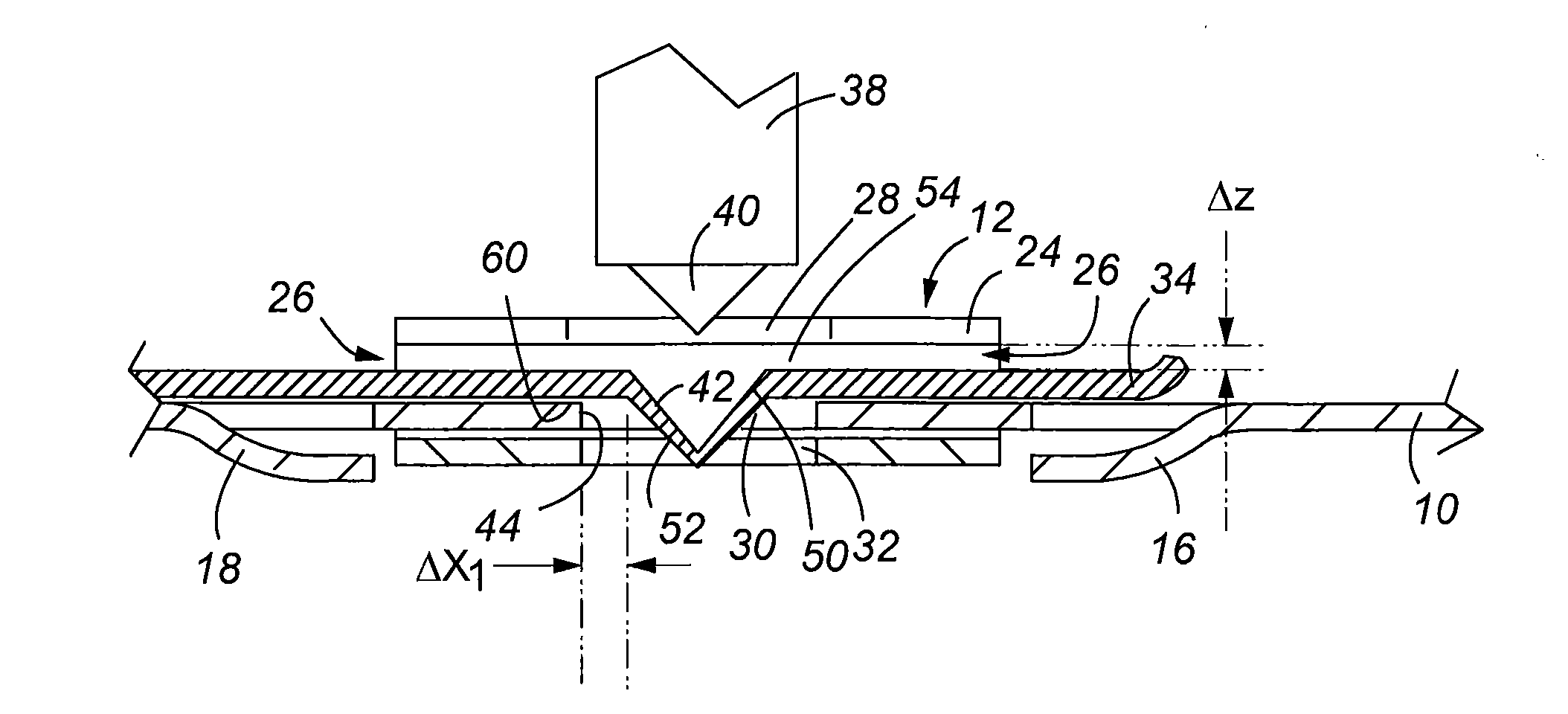Method and apparatus for bundling objects
a technology for bundling objects and restraining objects, applied in the direction of bundling articles, hose connections, manufacturing tools, etc., can solve the problems of incompletely formed locking dimples, inability to fully and completely form, and inability to fully and completely lock, so as to optimize the application of force over time, improve the formation of superior locking dimples, and optimize the effect of forming a superior locking dimpl
- Summary
- Abstract
- Description
- Claims
- Application Information
AI Technical Summary
Benefits of technology
Problems solved by technology
Method used
Image
Examples
Embodiment Construction
[0058]Referring to FIGS. 1 and 9, one embodiment of an improved punch and knife for use in a banding system, such as the Band-It ⅜″ Tie-Lok® system manufactured and sold by the Assignee of the present invention, is shown. In use, both the punch 100 and the knife 102 are positioned in a tool head 104. The tool head 104, shown in FIGS. 8 and 9, is stationary and the knife and punch move along a linear path between an upper position and a lower position. The tool head 104 comprises a body 106 having a first portion 108 with a cylindrical shaft or bore 110 for holding the knife 102 and guiding its reciprocating movement. The tool head has a second portion 116 in which a stationary cutter blade 118 is secured. The second body portion 116 includes a pair of apertures 120, 122 through which pins 124, 126 are positioned to secure the cutter blade 118. The cutter blade 118 includes a bore 128 to receive one of the pins.
[0059]A preferred embodiment of the cutter blade 118 is shown in FIGS. 11...
PUM
| Property | Measurement | Unit |
|---|---|---|
| angle | aaaaa | aaaaa |
| angle | aaaaa | aaaaa |
| distance | aaaaa | aaaaa |
Abstract
Description
Claims
Application Information
 Login to View More
Login to View More - R&D
- Intellectual Property
- Life Sciences
- Materials
- Tech Scout
- Unparalleled Data Quality
- Higher Quality Content
- 60% Fewer Hallucinations
Browse by: Latest US Patents, China's latest patents, Technical Efficacy Thesaurus, Application Domain, Technology Topic, Popular Technical Reports.
© 2025 PatSnap. All rights reserved.Legal|Privacy policy|Modern Slavery Act Transparency Statement|Sitemap|About US| Contact US: help@patsnap.com



